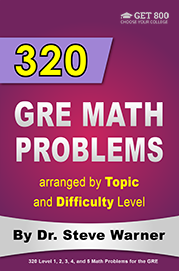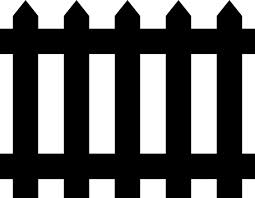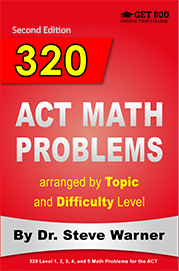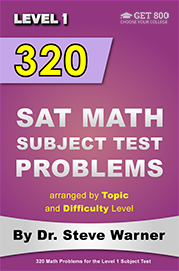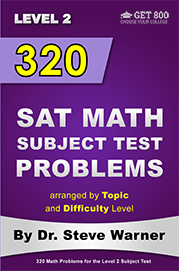
500 New SAT Math Problems
Just 19.99 on Amazon
Hi everyone! The latest edition of 500 New SAT Math Problems is now available in paperback from Amazon. This edition just has been modified from the previous edition to account for the changes on the Digital SAT.
The paperback is now on sale on Amazon for only $19.99. Note that once the sale ends (by the end of today), the price of this book will go up to $42.99.
The promotion has ended. Thanks to everyone who participated. The book is now available at its regular price here: 500 New SAT Math Problems
If you have any questions, feel free to contact me at steve@SATPrepGet800.com
Thank you all for your continued support!
A Trick For Free Two Day Shipping
I would like to finish this post with a little trick you can use to get free 2 day shipping on any of the books you decide to purchase without making any additional purchases. If you have never used Amazon Prime you can sign up for a free month using the following link.
Sign Up For Amazon Prime For Free
If you have already had a free trial of Amazon Prime you can simply open up a new Amazon account to get a new free trial. It just takes a few minutes! You will need to use a different email address than the one you usually use.
This next part is very important! After you finish your transaction, go to your Account, select “Manage my prime membership,” and turn off the recurring billing. This way in a month’s time Amazon will not start charging you for the service.
After shutting off the recurring billing you will still continue to receive the benefit of free 2 day shipping for one month. This means that as long as you use this new Amazon account for your purchases you can do all of your shopping on Amazon for the next month without having to worry about placing minimum orders to get free shipping.
Just be aware that certain products from outside sellers do not always qualify for free shipping, so please always check over your bill carefully before you check out.
Well I hope you decide to take advantage of this very special offer, or at the very least I hope you will benefit from my Amazon “free 2 day shipping trick.” Here is the link one more time:
Sign Up For Amazon Prime For Free
If you think your friends might be interested in this special offer, please share it with them on Facebook:
Thank you all for your continued support!
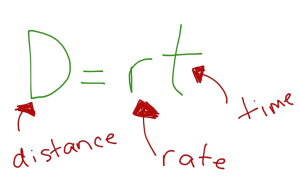
Xiggi’s Formula – An Advanced Math Strategy
Hello everyone. This post is mostly for more advanced students that are trying to get an 800 in SAT math (or close to it). That said, the strategy I will be describing here is actually very easy to apply. So even if you are not going for an 800, it will not take too much effort to learn this technique.
Today I would like to talk about Xiggi’s formula.
First of all, some of you may want to know who Xiggi is. Well Xiggi is a frequent poster on the SAT preparation forum of College Confidential. If you are preparing for the SAT I highly recommend that you utilize this forum as a resource.
The formula I will be discussing in this post is actually called the harmonic mean formula, but on the College Confidential site we all call it Xiggi’s formula. The reason for this is because Xiggi has become well known for helping students on the forum to solve this particular type of problem.
So when should one use Xiggi’s formula? Well, Xiggi’s formula can be used to find an average rate when two individual rates for the same distance are known.
Here is the formula:
Important notes: (1) Xiggi’s Formula works only when the two distances are the same.
(2) Even though the distance is often given in these types of problems, note that the formula does not use the distance. It uses only the two rates.
(3) For these types of SAT problems, the words “rate” and “speed” are interchangeable.
Here is an example of a problem where Xiggi’s formula is the best way to go:
 An elephant traveled 7 miles at an average rate of 4 miles per hour and then traveled the next 7 miles at an average rate of 1 mile per hour. What was the average speed, in miles per hour, of the elephant for the 14 miles?
An elephant traveled 7 miles at an average rate of 4 miles per hour and then traveled the next 7 miles at an average rate of 1 mile per hour. What was the average speed, in miles per hour, of the elephant for the 14 miles?
Let’s solve this problem using Xiggi’s formula. We have
Just to compare, let’s also solve this problem in the more traditional way – by writing out a “distance = rate · time” chart.

Note that we computed the times by using “distance = rate · time” in the form
Finally, we use the formula in the form
Note: To get the total distance we add the two distances, and to get the total time we add the two times. Be careful – this doesn’t work for rates!
SAT, ACT and GRE math problems of this type are always Level 5 problems. But if you know Xiggi’s formula, you can solve this type of question in just a few seconds. So in my opinion, it is well worth committing this one to memory.
Here is another math question where Xiggi’s formula can be useful. Give this one a try on your own.
 Jason ran a race of 1600 meters in two laps of equal distance. His average speeds for the first and second laps were 11 meters per second and 7 meters per second, respectively. What was his average speed for the entire race, in meters per second?
Jason ran a race of 1600 meters in two laps of equal distance. His average speeds for the first and second laps were 11 meters per second and 7 meters per second, respectively. What was his average speed for the entire race, in meters per second?
See if you can solve this problem using Xiggi’s formula. And then also try to solve it with a “distance = rate · time” chart.
I will provide both solutions in tomorrow’s post. But feel free to leave your own solutions in the comments.
 Remember that Xiggi’s formula should only be used when the two distances are the same! Should it ALWAYS be used when the distances are the same? We will address this question in next week’s post where we will look at distance, rate, time problems where Xiggi’s formula is not as useful.
Remember that Xiggi’s formula should only be used when the two distances are the same! Should it ALWAYS be used when the distances are the same? We will address this question in next week’s post where we will look at distance, rate, time problems where Xiggi’s formula is not as useful.
Until then, I will leave you with the following “Challenge Problem.”
Use the formula d = rt to derive Xiggi’s formula.
More Hard Practice Problems
For many more hard problems like these, each with several fully explained solutions, check out the Get 800 collection of test prep books. Click on the picture below for more information about these books.
If you liked this article, please share it with your Facebook friends:
Speak to you soon!
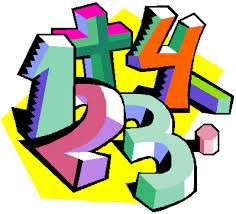
Hard GRE Math Arithmetic Problems with Solutions
Yesterday I posted some really hard GRE Arithmetic problems, and today I would like to give you solutions to those problems. Please feel free to post your own solutions or attempted solutions in the comments below as well. If you still want further explanation after reading the below solutions please do not hesitate to ask.
Level 5 GRE Arithmetic Problems with Solutions
- If n is a positive integer such that the units (ones) digit of n2 + 4n is 7 and the units digit of n is not 7, what is the units digit of n + 3?
Solution: By plugging in values for n, we find that for n = 9,
n2 + 4n = 92 + 4 ⋅ 9 = 81 + 36 = 117.
So n = 9 works, and n + 3 = 9 + 3 = 12. So the units digit of n + 3 is 2.
Advanced solution showing the independence of n:
n2 + 4n = n(n + 4).
So we are looking at positive integers 4 units apart whose product ends in 7. Since 7 is odd, n must be odd. So n must end in 1, 3, 5, or 9. Note that we skip n = 7 since the problem forbids us from using it.
If n ends in 1, then n + 4 ends in 5, and n(n + 4) ends in 5.
If n ends in 3, then n + 4 ends in 7, and n(n + 4) ends in 1.
If n ends in 5, then n + 4 ends in 9, and n(n + 4) ends in 5.
If n ends in 9, then n + 4 ends in 13, and n(n + 4) ends in 7.
So n ends in a 9, and n + 3 ends in a 2.
- The sum of the positive odd integers less than 200 is subtracted from the sum of the positive even integers less than or equal to 200. What is the resulting difference?
We write out each sum formally, line them up, and subtract term by term.
2 + 4 + 6 + … + 200
1 + 3 + 5 + … + 199
1 + 1 + 1 + … + 1
Now notice that we’re adding 1 to itself 100 times. So the answer is 100.
Note: It is easiest to see that we are adding 100 ones by looking at the sum of the positive even integers less than or equal to 200. There are 200/2 = 100 terms in this sum.
Quick solution: Once you get a little practice with this type of problem you can simply compute 100•1 = 100.
Solution using the sum feature on your graphing calculator: (This solution cannot be used on the GRE, but it could for other standardized tests where a graphing calculator is allowed) Press the 2nd button followed by the List button (same as Stat button).
Go to Math and select 5: sum( or press 5.
Press 2nd followed by List again.
Go to Ops and select 5: seq( or press 5.
Enter x, x, 1, 199, 2)).
The display should look like this: sum(seq(x, x, 1, 199, 2)).
Press Enter and you should get the answer 10,000.
Next enter sum(seq(x, x, 2, 200, 2)) and you should get the answer 10,100. Finally, 10,100 – 10,000 = 100.
Note: In the expression sum(seq(x, x, 2, 200, 2)) the last 2 indicates the step size. Here we are adding every other number.
- The positive number k is the product of four different positive prime numbers. If the sum of these four prime numbers is a prime number greater than 20, what is the least possible value for k?
Solution: Let’s begin listing sequences of 4 prime numbers, and checking if their sum is also prime, beginning with the smallest primes.
2, 3, 5, 7 Sum = 17 too small
2, 3, 5, 11 Sum = 21 not prime
2, 3, 7, 11 Sum = 23 prime
2, 3, 5, 13 Sum = 23 prime
Now, (2)(3)(7)(11) = 462, and (2)(3)(5)(13) = 390. Since 390 is smaller, k = 390.
More Hard GRE Math Practice Problems
For many more hard GRE math problems like these, each with several fully explained solutions, check out 320 GRE Math Problems arranged by Topic and Difficulty Level.
And if you think your friends would like to try these problems, please share:
Talk soon!

Hard GRE Math Arithmetic Problems
Hello everybody. I think it’s time for all of you to do a little more work. Here are three challenging Level 5 GRE arithmetic questions. Note that all three of these questions are free response questions (or grid-ins). Please feel free to post your solutions or attempted solutions in the comments below and we can discuss the best way to solve each of these problems. I will post full solutions tomorrow.
Level 5 GRE Arithmetic Problems
- If n is a positive integer such that the units (ones) digit of n2 + 4n is 7 and the units digit of n is not 7, what is the units digit of n + 3?
- The sum of the positive odd integers less than 200 is subtracted from the sum of the positive even integers less than or equal to 200. What is the resulting difference?
- The positive number k is the product of four different positive prime numbers. If the sum of these four prime numbers is a prime number greater than 20, what is the least possible value for k?
More Hard GRE Math Practice Problems
For many more hard GRE math problems like these, each with several fully explained solutions, check out 320 GRE Math Problems arranged by Topic and Difficulty Level.
And if you think your friends would like to try these problems, please share:
Talk soon!
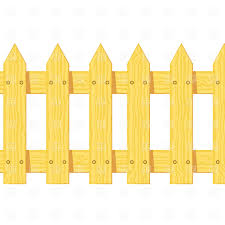 The Fence-Post Formula
The Fence-Post Formula

Today I want to discuss a math concept that can be used to solve certain types of problems that appear every now and then on standardized tests. Tutors tend not to spend much time (if any) helping students prepare for this type of problem as it seldom appears. But if you want a perfect math score, then you want to be able to recognize all problem types and be able to answer them correctly (and quickly!).
This problem type involves what I like to call “Fence-Posting,” a technique that allows us to count the number of integers in a consecutive list.
Fence-post formula: The number of integers from a to b, inclusive, is
b – a + 1.
The word inclusive means that we include the extreme values.
For example, if we want to count the integers from 1 to 3, inclusive, we can easily see that there are 3 of them. Note that we do include the extreme values 1 and 3. Using the fence-post formula we get
3 – 1 + 1 = 3.
The most common error when attempting to count the integers in a list is to simply subtract the smallest value from the largest value (without adding 1). Note that in the previous example, this would give an incorrect answer of 2.
As another simple example, let’s count the number of integers from 5 to 12, inclusive, in two ways – directly and by fence-posting. First directly – the integers from 5 to 12 are 5, 6, 7, 8, 9, 10, 11, 12, and we see that there are 8 of them. Now using the fence-post formula we have
12 – 5 + 1 = 8.
Note that the computation 12 – 5 gives an incorrect answer of 7.
If you ever happen to forget this little formula test it out on a small list of numbers as I just did in the two examples above. But it’s nice to have this one committed to memory so that it is there for you when you need it.
Let’s take a look at a couple of examples where we can use fence-posting to obtain an answer efficiently.
Example 1
Set X contains only the integers 0 through 180 inclusive. If a number is selected at random from X, what is the probability that the number selected will be greater than the median of the numbers in X?
So first of all we need to find out how many integers there are in the set X. By the fence-post formula there are
180 – 0 + 1 = 181
integers in this set.
The median of the numbers in set X is 90 (note that in a set of consecutive integers the median is equal to the average of the first and last integer). Again, by the fence-post formula, we see that there are
180 – 91 + 1 = 90
integers greater than the median.
From this we see that the desired probability is
90/181 (approximately 0.4972375691).
So we grid in .497. (Note that this is a grid-in question because I have not provided answer choices).
Remember with grid in problems, we have only four slots available. We can simply truncate the final answer that we get in our calculator to fit in the four slots.
Example 2
How many numbers between 72 and 356 can be expressed as 5x + 3, where x is an integer?
This problem is more complicated than the first example, but we can use fence-posting to solve this one too: Let’s start by guessing x-values until we find the smallest and largest values of x satisfying
72 < 5x + 3 < 356.
Since we have 5(13) + 3 = 68 and also 5(14) + 3 = 73 we see that 14 is the smallest value of x satisfying the inequality.
Since 5(70) + 3 = 353 and 5(71) + 3 = 358, the largest value of x satisfying the inequality is 70.
It follows by fence-posting that the answer is 70 – 14 + 1 = 57.
Note that we also used the strategy of taking a guess to solve this problem. I discussed this strategy in a previous blog post. You can find that information by clicking on the link.
Algebraic solution:
72 < 5x + 3 < 356
69 < 5x < 353
69/5 < x < 353/5
13.8 < x < 70.6
14 ≤ x ≤ 70
We get the last inequality because x must be an integer. Notice that this last inequality is not strict. For those of you not familiar with this piece of math lingo, an inequality that is not strict means that it is ‘less than or equal to’ rather than just ‘less than’.
Finally, t follows by fence-posting that the answer is 70 – 14 + 1 = 57.
Tomorrow I will be showing a quick method for computing differences of large sums. You will also see how the fence-post formula can sometimes be useful in solving these types of problems. Click the following link to read this article: Differences of Large Sums
More Hard Practice Problems
For many more hard problems like these, each with several fully explained solutions, check out the Get 800 collection of test prep books. Click on the picture below for more information about these books.
If you liked this article, please share it with your Facebook friends:
Speak to you soon!
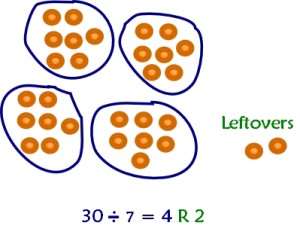
Hard Remainder Problem with Solution
Today I will provide a solution for the difficult remainder problem I asked you to attempt yesterday. Once again, you may want to read some of my older posts about remainders before going over the solution here. You can find those posts by using the following links:
Can We Solve Remainder Problems Without Using Long Division?
The Cyclical Nature of Remainders
And now here is the question once more, followed by a complete solution.
Level 6 Remainder Problem
Find the remainder when 2120 is divided by 3.
Solution by recognizing a pattern:
21 = 2, remainder = 2
22 = 4, remainder = 1
23 = 8, remainder = 2
24 = 16, remainder = 1
25 = 32, remainder = 2
26 = 64, remainder = 1
27 = 128, remainder = 2
Note that we evaluated the first 7 powers of 2, and then gave each of the remainders upon division by 3.
For example, 16 = 3(5) + 1, and so the remainder when 16 is divided by 3 is 1.
Now simply observe that all even powers of 2 give a remainder of 1 when divided by 3. Therefore, the answer is 1.
Remark: So how do we know with absolute certainty that the pattern we produced will continue indefinitely? After all, isn’t it possible that the pattern can stop at any time? Just because a pattern holds for the first 7 positive integers, it may not necessarily still hold for the 8th positive integer, or any other integer thereafter. But in this case it does.
Let’s prove two more general theorems that will imply that the pattern holds.
Theorem 1: If an integer gives a remainder of 1 when divided by 3, then twice that integer gives a reminder of 2 when divided by 3.
Proof: Let n be an integer that gives a remainder of 1 when divided by 3.
Then there is an integer k such that n = 3k + 1.
So 2n = 2(3k + 1) = 6k + 2 = 3(2k) + 2.
Since 2k is an integer, we have shown that 2n gives a remainder of 2 when divided by 3.
Theorem 2: If an integer gives a remainder of 2 when divided by 3, then twice that integer gives a reminder of 1 when divided by 3.
Proof: Let n be an integer that gives a remainder of 2 when divided by 3.
Then there is an integer k such that n = 3k + 2.
So 2n = 2(3k + 2) = 6k + 4 = 6k + 3 + 1 = 3(2k + 1) + 1.
Since 2k + 1 is an integer, we have shown that 2n gives a remainder of 1 when divided by 3.
After going through the proofs of these theorems, you should reflect back and make sure you understand why these two theorems imply that the pattern holds.
More Remainder Practice Problems
Don’t forget to take a look at the Get 800 collection of test prep books.
If you think your friends would like to try this problem, please share:
Speak to you soon!

Hard Remainder Problem
Students are always asking me to solve some difficult problems. Today I would like to give you a difficult remainder problem similar to one a student recently asked me about. Before attempting this problem you may want to read some of my older posts on remainders. You can find them by using the following links:
Can We Solve Remainder Problems Without Using Long Division?
The Cyclical Nature of Remainders
And now here is a challenging problem for you to try. This problem is probably a little more difficult than any that would actually show up on a standardized test, but it’s always worth struggling with these harder problems a bit to help raise your level of mathematical maturity. Feel free to post your attempted solutions in the comments. I will provide a complete solution tomorrow.
Level 6 Remainder Problem
Find the remainder when 2120 is divided by 3.
More Remainder Practice Problems
Don’t forget to take a look at the Get 800 collection of test prep books.
If you think your friends would like to try this problem, please share:
Speak to you soon!

Solutions To Yesterday’s Hard Geometry Problems
Today I would like to post solutions to the three hard geometry questions I posted yesterday. If you still want further explanation after reading the below solutions please do not hesitate to ask.
Level 5 Geometry Problems
- The lengths of the sides of a triangle are x, 16 and 31, where x is the shortest side. If the triangle is not isosceles, what is a possible value of x?
Solution: By the triangle rule, x lies between 31 – 16 = 15 and 31 + 16 = 47. That is, we have 15 < x < 47. But we are also given that x is the length of the shortest side of the triangle. So x < 16.Therefore we can grid in any number between 15 and 16. For example, we can grid in 15.1.
For more information on the triangle rule see the following article: The Triangle Rule
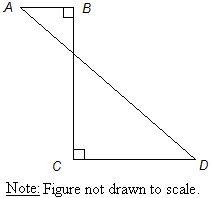
- In the figure above, if AB = 4, BC = 24, and AD = 26, then CD =
Solution: The problem becomes much simpler if we “move” BC to the left and AB to the bottom as shown below.
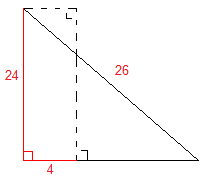
We now have a single right triangle and we can either use the Pythagorean Theorem, or better yet notice that 26 = (13)(2) and 24 = (12)(2). Thus the other leg of the triangle is (5)(2) = 10. So we see that CD must have length 10 – 4 = 6.
Remark: If we didn’t notice that this was a multiple of a 5-12-13 triangle, then we would use the Pythagorean Theorem as follows.
(x + 4)2 + 242 = 262
(x + 4)2 + 576 = 676
(x + 4)2 = 100
x + 4 = 10
x = 6
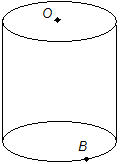
- The figure above shows a right circular cylinder with diameter 6 and height 9. If point O is the center of the top of the cylinder and B lies on the circumference of the bottom of the cylinder, what is the straight-line distance between O and B?
Solution: We draw a right triangle inside the cylinder as follows:
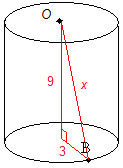
Note that the bottom leg of the triangle is equal to the radius of the circle (not the diameter) which is why it is 3 and not 6. We can now use the Pythagorean Theorem to find x.
x2 = 32 + 92 = 9 + 81 = 90
Taking the square root gives x approximately equal to 9.4868. So we grid in 9.48 or 9.49.
More Geometry Practice Problems
For more hard geometry problems like these, each with several fully explained solutions, check out the Get 800 collection of test prep books.
If you think your friends would like to try these problems, please share:
Speak to you soon!

Hard Geometry Problems
I think it’s about time for all of you to do a little work. Here are three challenging Level 5 geometry questions. Problems like these can appear on the SAT, ACT or GRE (although on the ACT they would be multiple choice instead of free response). Note that all three of these questions are free response questions (or grid-ins). Please feel free to post your solutions or attempted solutions in the comments below and we can discuss the best way to solve each of these problems.
Level 5 Geometry Problems
- The lengths of the sides of a triangle are x, 16 and 31, where x is the shortest side. If the triangle is not isosceles, what is a possible value of x?

- In the figure above, if AB = 4, BC = 24, and AD = 26, then CD =

- The figure above shows a right circular cylinder with diameter 6 and height 9. If point O is the center of the top of the cylinder and B lies on the circumference of the bottom of the cylinder, what is the straight-line distance between O and B?
More Geometry Practice Problems
For more hard geometry problems like these, each with several fully explained solutions, check out the Get 800 collection of test prep books.
If you think your friends would like to try these problems, please share:
Speak to you soon!
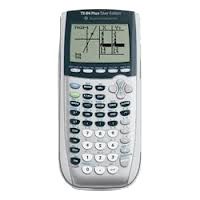 General Graphing Calculator Advice for the SAT/ACT
General Graphing Calculator Advice for the SAT/ACT
- I always recommend that you use a TI-84 or comparable graphing calculator for the SAT or ACT.
- It is important that you are comfortable with your calculator on test day, so make sure that you are consistently practicing with the calculator you plan to use.
- Make sure that your calculator has fresh batteries the day of the test. Nobody will supply a calculator for you if yours dies.
- You may have to switch between DEGREE and RADIAN modes during the test. If you are using a TI-84 (or equivalent) calculator press the MODE button and scroll down to the third line when necessary to switch between modes.
Graphing Calculator Features You Should Know for the SAT/ACT
Below are the most important things you should practice on your graphing calculator.
(1) Practice entering complicated computations in a single step, and know when to insert parentheses. In general, there are 4 instances when you should use parentheses in your calculator. Around numerators of fractions Around denominators of fractions Around exponents Whenever you actually see parentheses in the expression
- Around numerators of fractions
- Around denominators of fractions
- Around exponents
- Whenever you actually see parentheses in the expression
Examples: We will substitute a 5 in for x in each of the following examples.
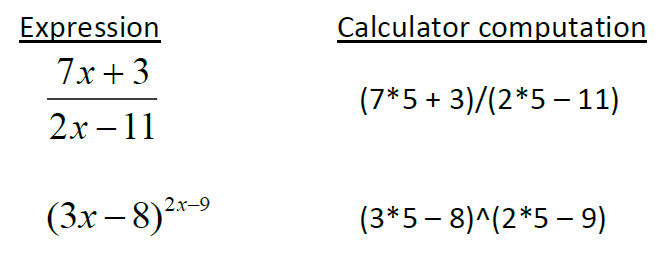
(2) Clear the screen before using it in a new problem. The big screen allows you to check over your computations easily.
(3) Press the ANS button (2nd (-) ) to use your last answer in the next computation.
(4) Press 2nd ENTER to bring up your last computation for editing. This is especially useful when you are plugging in answer choices, or guessing and checking.
(5) You can press 2nd ENTER over and over again to cycle backwards through all the computations you have ever done.
(6) Know where the ,√ ,π and ^ buttons are so you can reach them quickly.
(7) Change a decimal to a fraction by pressing MATH ENTER ENTER.
(8) Press the MATH button – in the first menu that appears you can take cube roots and nth roots for any n.
(9) Know how to use the SIN, COS and TAN buttons as well as SIN-1, COS-1 and TAN-1.
ACT only
The following features are necessary for the ACT only.
(10) Press the MATH button. Scroll right to NUM and you have lcm( and gcd(. Scroll right to PRB and you have nPr, nCr, and ! to compute permutations, combinations and factorials very quickly.
(11) Know where LOG button is so you can reach it quickly.
Advanced Features
The following items are less important but can be useful for both the SAT and ACT.
(12) Press the Y= button to enter a function, and then hit ZOOM 6 to graph it in a standard window.
(13) Practice using the WINDOW button to adjust the viewing window of your graph.
(14) Practice using the TRACE button to move along the graph and look at some of the points plotted.
(15) Pressing 2nd TRACE (which is really CALC) will bring up a menu of useful items. For example selecting ZERO will tell you where the graph hits the x-axis, or equivalently where the function is zero. Selecting MINIMUM or MAXIMUM can find the vertex of a parabola. Selecting INTERSECT will find the point of intersection of 2 graphs.
And now it’s time to start practicing lots of math problems. For this you may want to take a look at the Get 800 collection of test prep books. Click on the picture below for more information about these books.
If you liked this article, please share it with your Facebook friends:
See you tomorrow!
 Remainder Problems – Part 3
Remainder Problems – Part 3

Welcome to the third and final part of this thread on remainder problems. In the first part we discussed some calculator algorithms for finding remainders. You can review that article here: SAT Remainder Problems – Part 1
Yesterday we discussed the cyclical nature of remainders. You can review that article here: SAT Remainder Problems – Part 2
I decided to spend three posts on this subject because many of my students in a mid-level scoring range seem to have a difficult time with ACT and GRE remainder questions.
Solution To Last Week’s Remainder Problem
So where were we? I left you with an ACT math problem to solve using the information I provided regarding the cyclical nature of remainders. Let’s find out how you did.
The problem again:
What is the least positive integer greater than 4 that leaves a remainder of 4 when divided by both 6 and 8?
Solution: We first find the least positive integer greater than 4 that is divisible by both 6 and 8. This is the least common multiple of 6 and 8 which is 24.
We now simply add the remainder.
24 + 4 = 28.
Thus, the answer is 28.
If you don’t know how to find the least common multiple of two numbers, it’s okay. If you’re taking the ACT, you can just let your TI-84 calculator do it for you. In your calculator press MATH, scroll right to NUM, and press 8 for lcm. Then type 6,8) and you will get an output of 24. So lcm(6,8)=24.
If you are taking the GRE, or you just want to learn other ways to compute the lcm, see the following article: Greatest Common Divisor (GCD) And Least Common Multiple (LCM)
Remainders In Disguise
Test makers’ love to put their remainder problems in disguise. In fact, many remainder problems on standardized tests do not even have the word “remainder” in the question! So how can you be expected to know when to find a remainder? The answer is quite simple. If the problem mentions some kind of sequence that keeps repeating over and over, then the problem may be asking you to find a remainder.
Remember this and you will recognize a remainder problem every time. In fact, this is such a key point I am going to repeat this in bold for you!
If the problem mentions some kind of sequence that keeps repeating over and over, then the problem may be asking you to find a remainder.
Let’s take a look at a standard example of such a question:
Example
Cards numbered from 1 through 2013 are distributed, one at a time, into nine stacks. The card numbered 1 is placed on stack 1, card number 2 on stack 2, card number 3 on stack 3, and so on until each stack has one card. If this pattern is repeated, each time beginning with stack one, on which stack will the card numbered 2013 be placed?
A. 3rd stack
B. 4th stack
C. 5th stack
D. 6th stack
E. 7th stack
Solution: We are actually being asked to find the remainder when 2013 is divided by 9. Let’s do this using the first calculator algorithm that I showed you.
Step 1: Perform the division in your calculator
2013/9 ~ 223.667
Step 2: Multiply the integer part of this answer by the divisor:
9*223 = 2007
Step 3: Subtract this result from the dividend to get the remainder:
2013 – 2007 = 6.
So the card numbered 2013 will be placed on the 6th stack, choice D.
Notice that the word remainder is never mentioned in this problem. The giveaway that this is a remainder problem in disguise is at the beginning of the last sentence where it says “If this pattern is repeated…”
So this is the end of this three part thread on remainders.
More Remainder Problems with Explanations
If you are preparing for the ACT, the GRE, or an SAT math subject test, you may want to take a look at one of the following books.
If you liked this article, please share it with your Facebook friends:


